中国的夏朝、虞朝、古唐国、华胥国实物证据找到
广西红水河石板画本地石农在河中打捞 30 余年,石板画中科院碳 14 年份检测为 11829 年前制作, 中国星科际研究院经过八年研究广西红水河石板画为地球人无法制作的物品 。而且通过人证与物证 ,用反推理逻辑证明石板画内容的可靠性与真实性 ,所以广西红水河石板画将成为证明中国历史乃至世界历史的物证。
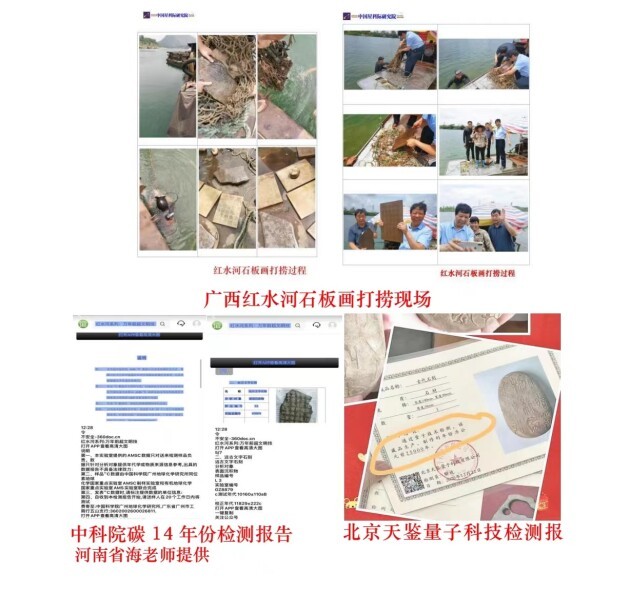
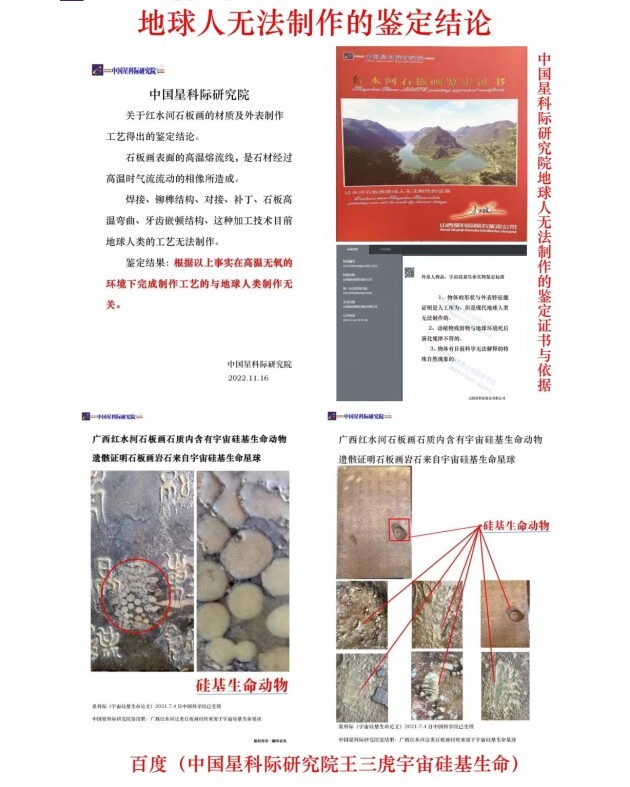
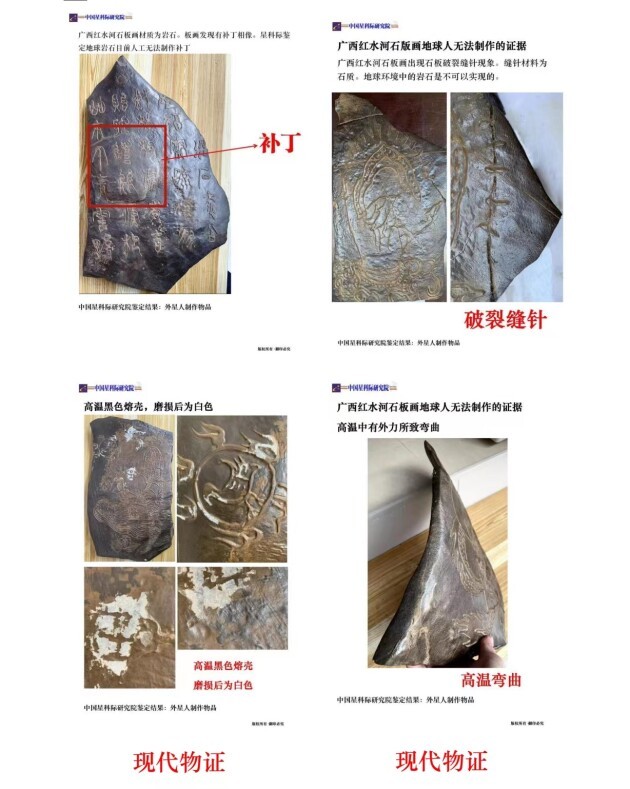
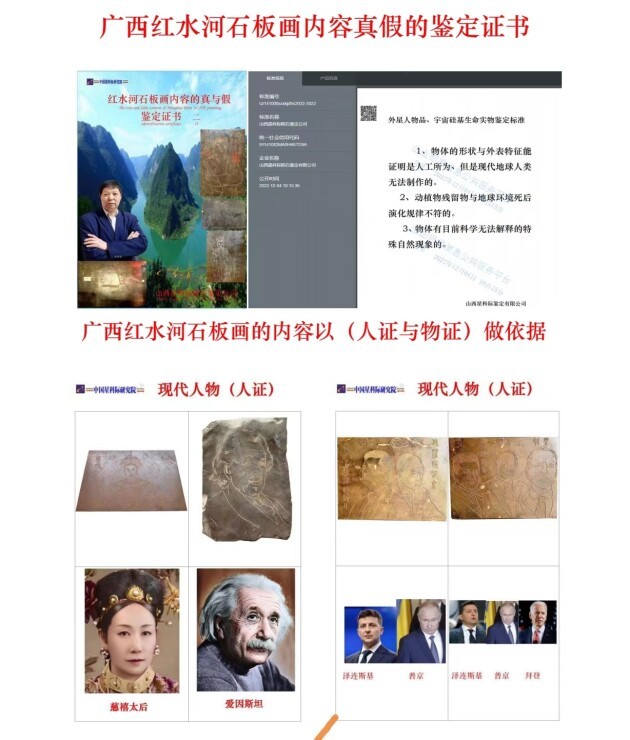
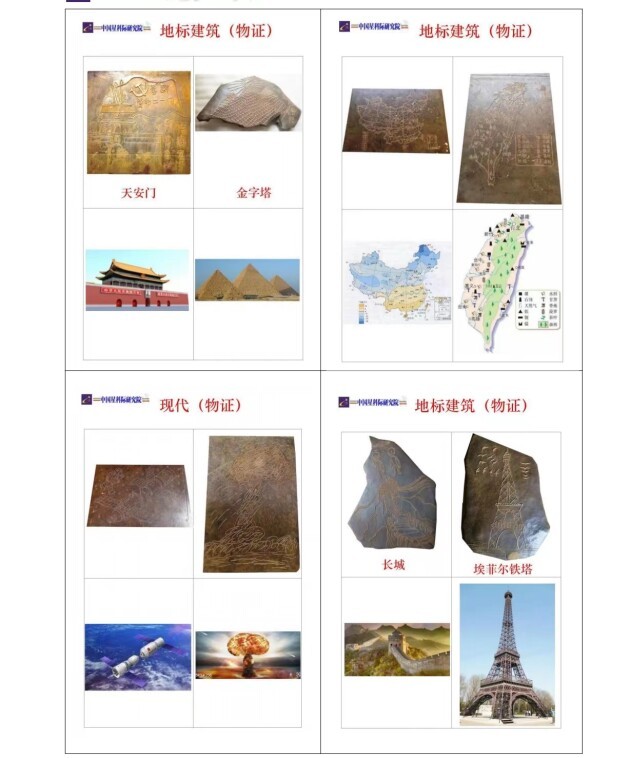
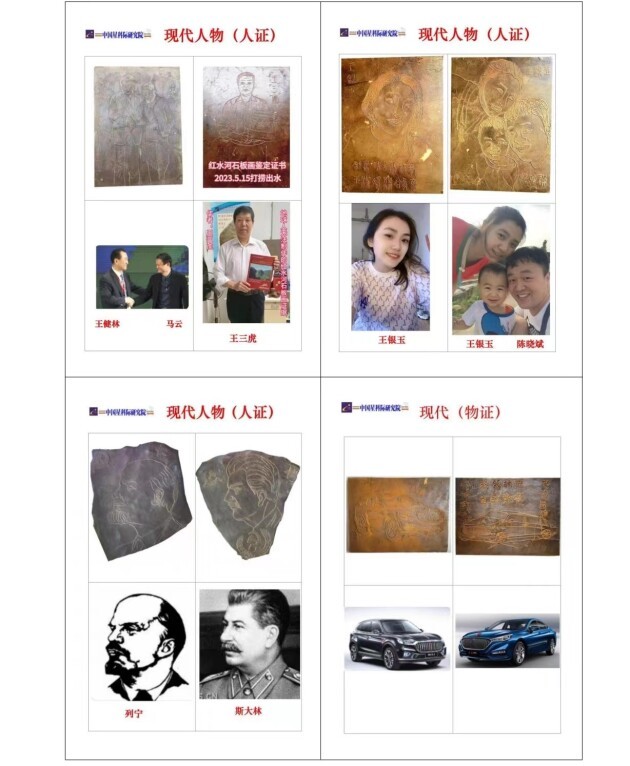
石板画内容的鉴定结果
根据星科际研究院对石板画的物理工艺检测为地球 人无法制作的二十多个证据以及制作工艺 ,必须在高温无氧的环境下完成制作。
根据以上石板画的内容 ,现代人物画像作为人物证 据 。地标建筑物、 中国地图作为物证 。经研究发现 ,现代人物 ,地标建筑与石板画内容高度一致。
经过反推理的逻辑得出以下结论:石板画的所有内 容没有虚假的 ,是真实存在的 。 由此可见石板画是证明 中国历史(乃至世界历史)、地球故事演绎的实物证据。
Identification of the contents of the SLATE
According to the physical process test of the SLATE painting by the International Institute of Astrology, more than 20 evidences and the production process cannot be made by the Earth people, and the production must be completed in a high temperature and oxygen-free environment.
According to the content of the above SLATE paintings, modern figures are used as evidence of figures. Landmark buildings, maps of China as material evidence. Through research, it is found that the content of modern figures, landmarks and SLATE paintings is highly consistent.
After counter-reasoning logic comes to the following conclusion: all the content of the SLATE painting is not false, it is real. It can be seen that SLATE painting is the physical evidence that proves Chinese history (and even world history) and the interpretation of the earth story.
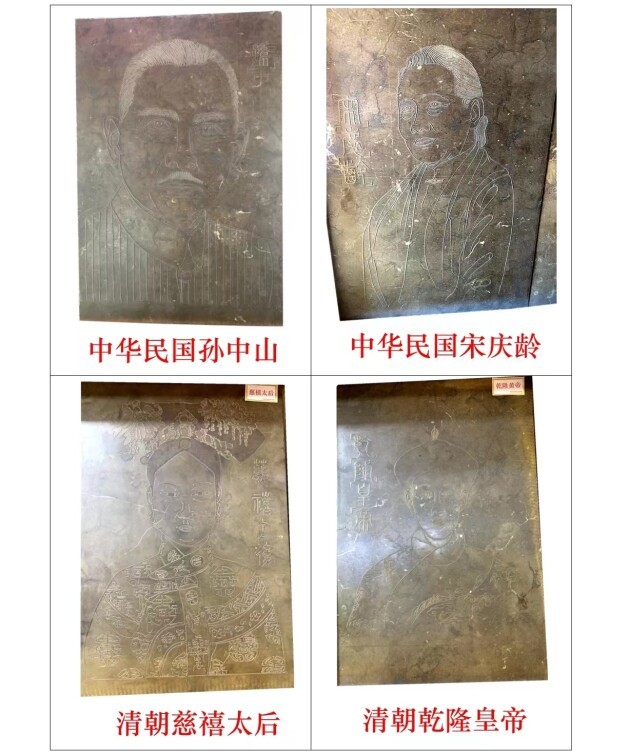
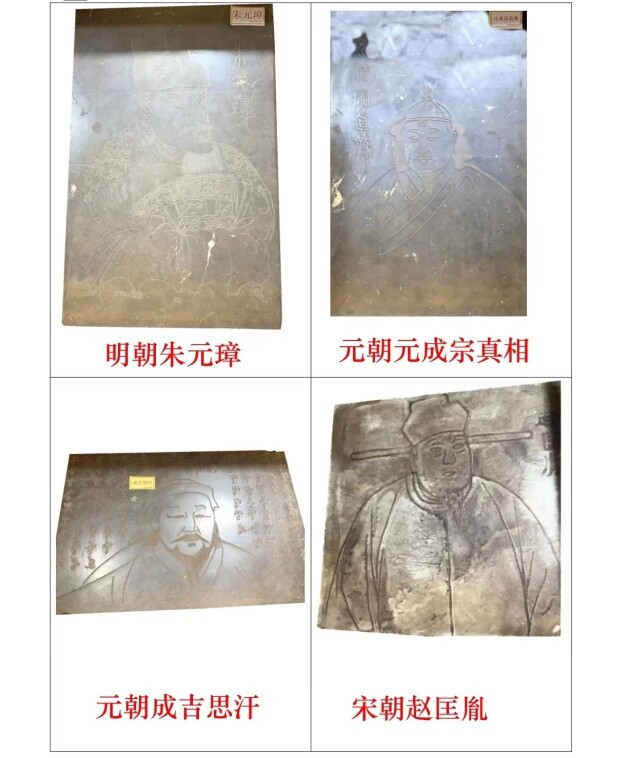
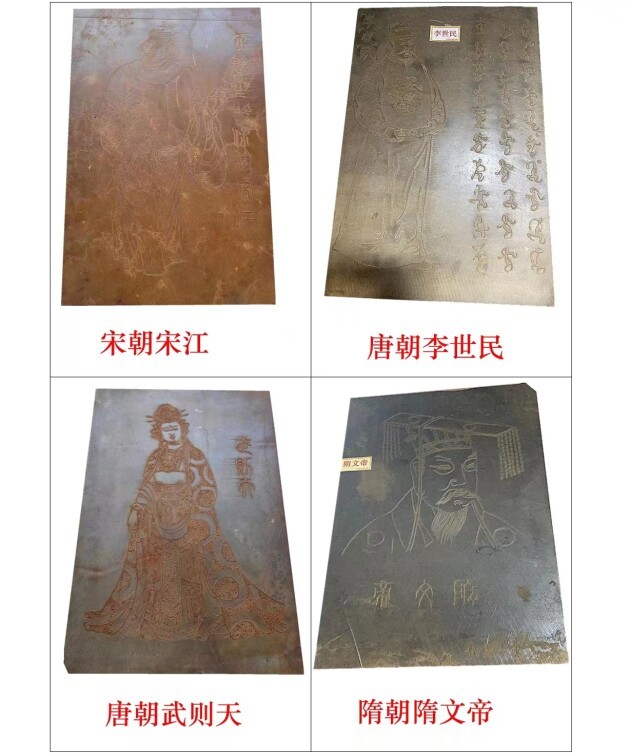
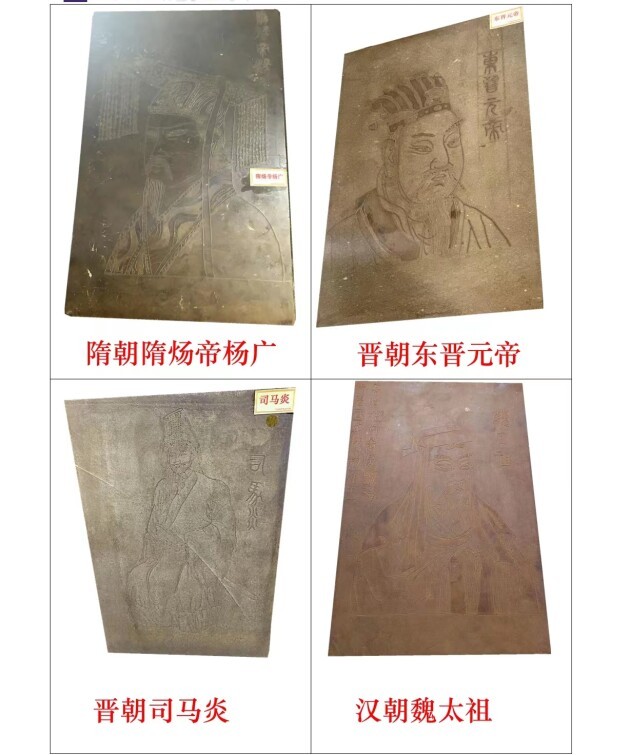
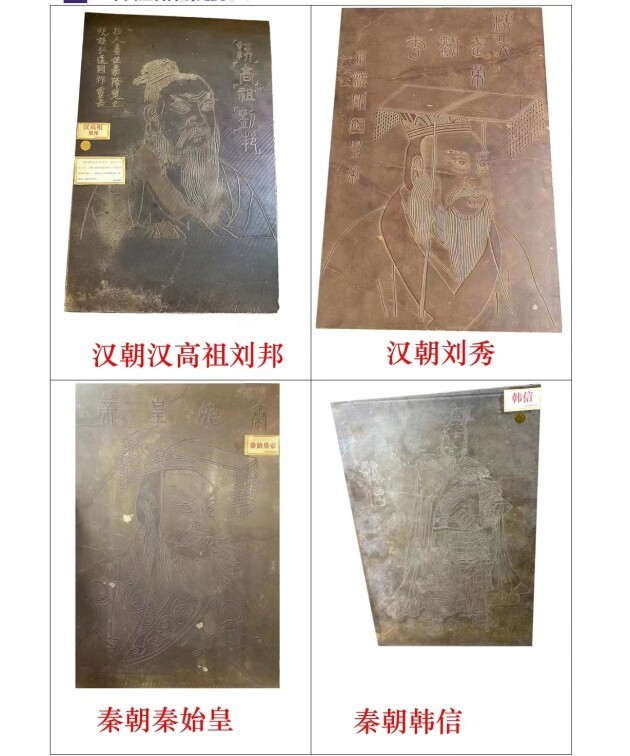
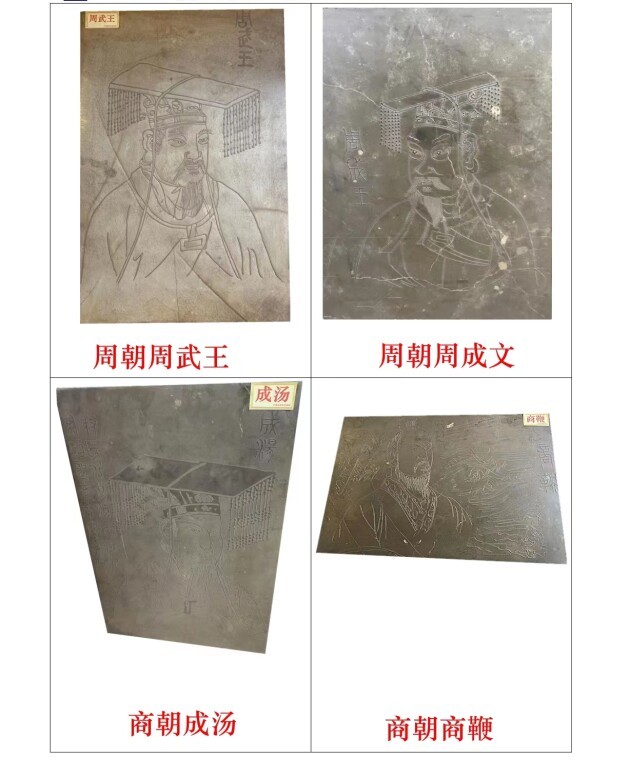
夏朝
夏朝(约公元前 2070 年—约公元前 1600 年 ) ,是中国史书中记载的第一个世袭制朝代 。 一般认为夏 朝共传 14 代、 17 后 (夏统治者在位称“后” ,去世后称“帝” ) ,建立者为大禹 , 亦又说是启 ,定都阳城 (今河南郑州登封)。
根据史书记载 ,禹本来传位于益,但益却让位给禹的儿子启,这段历史被看作是中国历史上“家天下”的 开始 。从夏朝的建立开始 。夏的十一支姒姓部落与夏后氏中央王室在血缘上有宗法关系 ,政治上有分封关系, 经济上有贡赋关系 ,大致构成夏王朝的核心领土范围 。夏时期的文物中有一定数量的青铜和玉制的礼器 , 年代 约在新石器时代晚期、青铜时代初期。
夏朝西起河南省西部、山西省南部,东至河南省、山东省和河北省三省交界处 ,南达湖北省北部 ,北及河 北省南部 。这个区域的地理中心是今河南偃师、登封、新密、禹州一带。
经夏商周断代史研究和中华文明探源工程初步勾勒出了公元前 2500 至前 1500 即尧舜时代到夏商之际的 社会图景 。 中原地区包括禹都阳城(今河南郑州登封王城岗遗址)在内的夏朝时期六座规模大、 等级高的中心 性都邑被列入了研究重点 。河南洛阳偃师二里头遗址的发现揭开了古老“夏都” 的神秘面纱 ,如今二里头遗址 为夏朝都城遗存已逐渐成为学界共识。
中文名 :夏朝
外文名 :The Xia Dynasty
别名 :夏、 西邑夏 [107- 108] 、西邑 [107- 108] 、有夏
时间范围 :公元前 2070 年 至 1600 年
帝王 :姒启 ,姒太康 ,姒少康 ,姒桀等
都城 :阳城、阳翟、安邑、斟鄩等
主要城市 :原、帝丘、老丘、西河、 亳等
语种 :雅言
货币 :贝币、贝蚌、铜贝
建立者:夏禹
Xia Dynasty
The Xia Dynasty (about 2070 BC - about 1600 BC) was the first hereditary dynasty recorded in Chinese history. It is generally believed that the Xia Dynasty passed a total of 14 generations and 17 years later (the Xia ruler was called "after" and the death was called "emperor"), and the founder was Da Yu, also known as Qi, and made Yangcheng (today Dengfeng, Zhengzhou, Henan Province) the capital.
According to historical records, Yu originally passed down the throne in Yi, but Yi gave way to Yu's son Qi, which is regarded as the beginning of the "family world" in Chinese history. It started with the founding of the Xia Dynasty. The eleven tribes of Xia's Si tribe were related to the central royal house of Xia Hou by clan, political fealty and economic tribute, and constituted roughly the core territory of the Xia Dynasty. The relics of the Xia period contain a certain
number of bronze and jade ritual vessels, dating from the late Neolithic Age and the early Bronze Age.
The Xia Dynasty began in the west of Henan Province, the south of Shanxi Province, the east to the junction of Henan Province, Shandong Province and Hebei Province, and reached the north of Hubei Province, North and south of Hebei Province. The geographical center of this area is the present Henan Yanshi,
Dengfeng, Xinmi, Yuzhou area.
Through the study of the history of Xia, Shang and Zhou Dynasties and the project of exploring the source of Chinese civilization, the social picture from the
Yao and Shun Dynasties to the Xia and Shang Dynasties from 2500 BC to 1500 BC has been preliminarily outlined. Six large scale and high grade central capital towns in the Central Plains of the Xia Dynasty, including Yudu Yangcheng (the site of Dengfeng Wangchenggang in Zhengzhou, Henan Province), are included in the research focus. The discovery of Erlitou Site of Yanshi in Luoyang, Henan Province has lifted the mystery of the ancient "summer capital", and now it has gradually become a consensus in the academic circles that Erlitou site is the capital of the Xia Dynasty.
Chinese name: Xia Dynasty Foreign name: The Xia Dynasty
Alias: Xia, Xiyi Xia [107-108], Xiyi [107-108], Youxia
Time frame: 2070 to 1600 BC
Emperor: Si Qi, Si Taikang, Si Shaokang, Jie and other capitals: Yangcheng, Yangdi, Anyi, Pou 鄩, etc
Major cities: Yuan, Diqiu, Laoqiu, Xihe, Bo, etc
Language: Yayan Currency: Bei Yuan, Bei Bei, copper Bei Founder: Xia Yu
——来自于网络
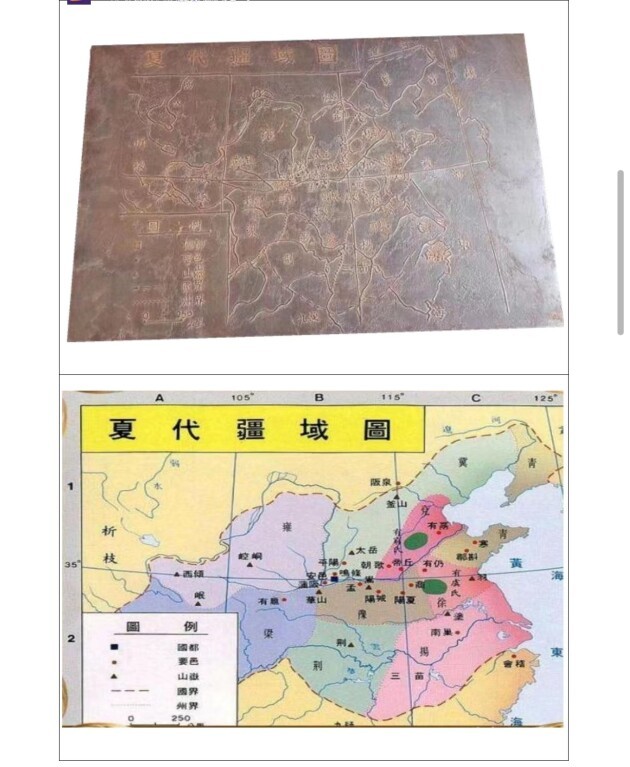
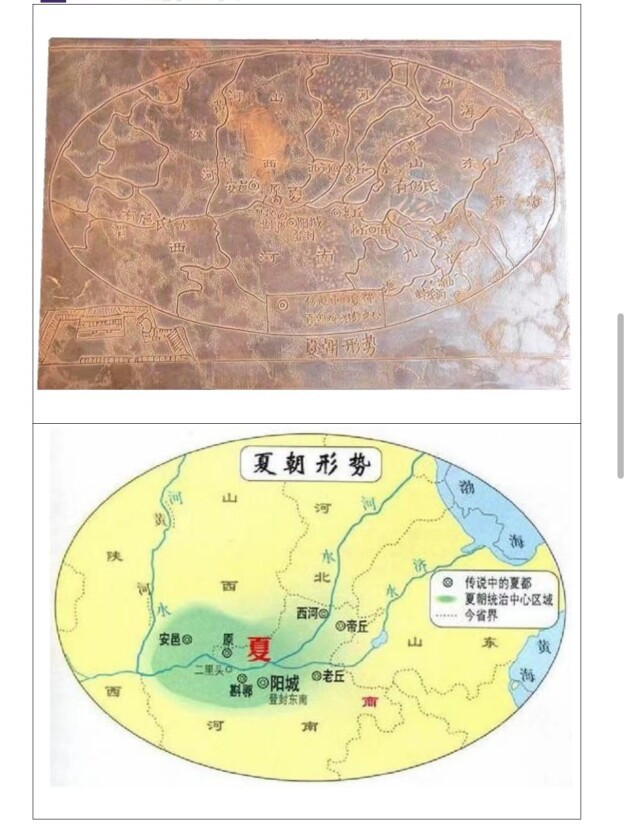
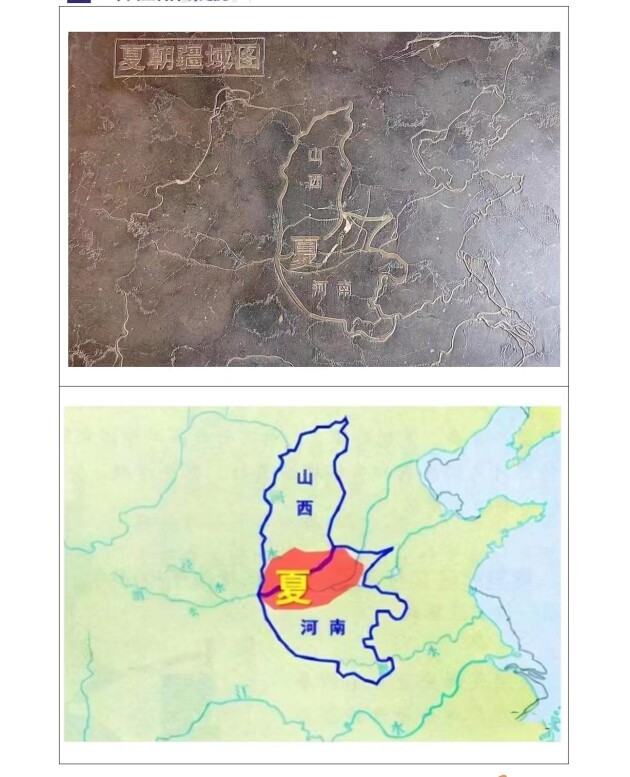
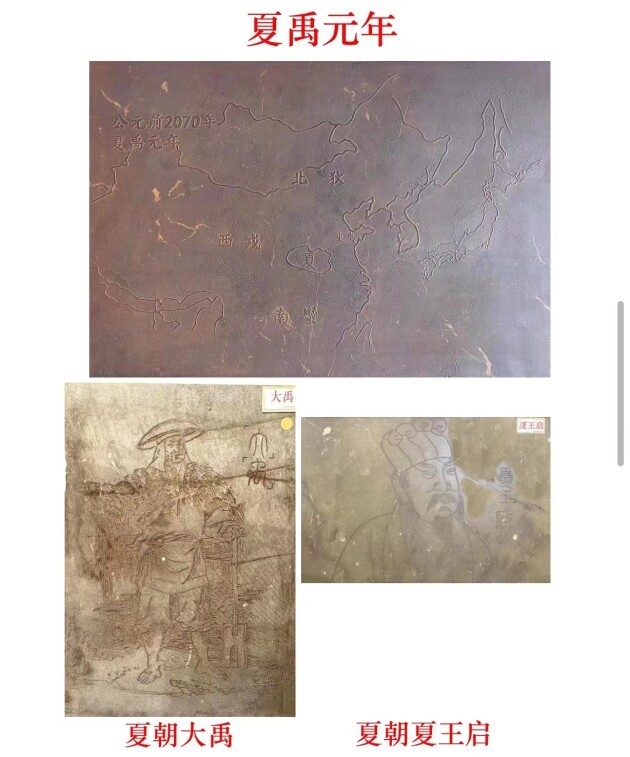
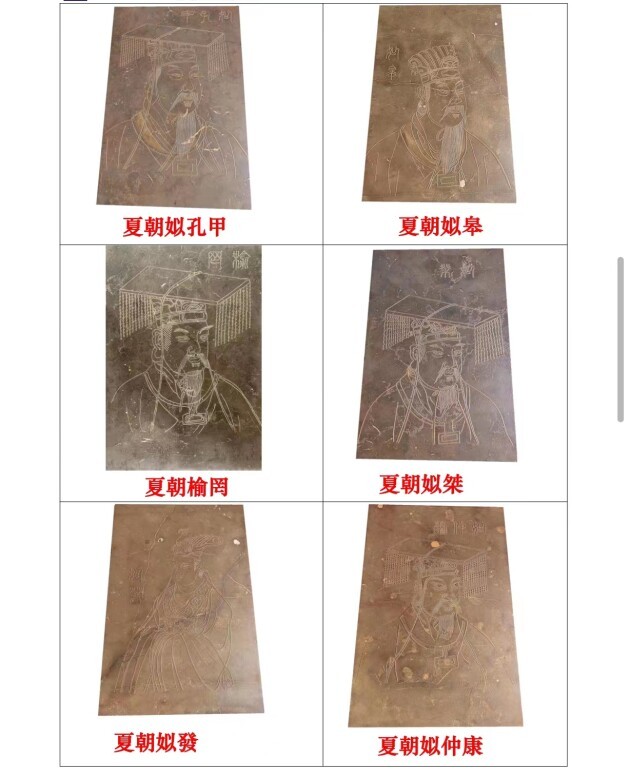
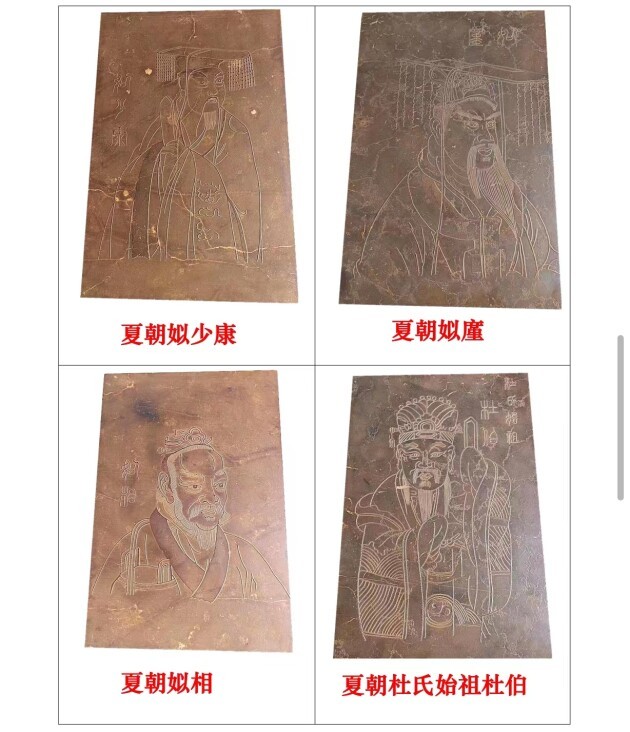
虞朝
虞朝(公元前 2095 年~公元前 2067;公元前 2064 年~公元前 2025 年), 传说中夏朝之前的朝代,由虞舜接受唐尧禅位后所建。首都蒲阪(今山西永济)。 “虞朝” 即史书上说的“虞舜”所统治的时期 ,虞舜姚重华, 出身于今山东诸城地区的有虞氏部落;故而所建朝代便被称为“虞朝”。
大禹接受虞舜禅位之后 ,将虞舜之子商均封在“虞”地(今河南商丘虞城 县) ,建立虞国;承嗣“有虞氏”之号 ,后来春秋时期的陈国、 战国时期的齐国(田齐) 的历代君主以及西汉末年的新朝建兴帝王莽皆为虞舜之后裔。
中文名:虞朝
外文名:The Yu Dynasty
所属洲 :亚洲
首都 :蒲阪(今山西永济)
主要城市 :蒲阪(今山西永济)、虞城(今河南商丘虞城县)
Yu Dynasty
Yu Dynasty (2095 BC ~ 2067 BC; 2064 BC ~ 2025 BC), the legendary dynasty before the Xia Dynasty, was founded by Yu Shun after he accepted the throne of Tang Yao. The capital was Puhan (now Yongji, Shanxi). Yu Dynasty was ruled by Yu Shun in the history books. Yu Shun Yao Zhong Hua was born in the Yu clan in Zhucheng area of Shandong Province.
Therefore, the dynasty established was called "Yu Dynasty".
After accepting the throne of Yu Shun, Yu sealed Shang Jun, the son of Yu Shun, in the land of Yu (now Yucheng County, Shangqiu, Henan Province) and established the State of Yu. Bearing the title of "Yu Clan", the later monarchs of the
State of Chen in the Spring and Autumn Period, the State of Qi (Tian Qi) in the Warring States Period and the new Dynasty Jianxing Emperor Wang Mang at the end of the Western Han Dynasty were all descendants of Yu Shun.
Chinese name: Yu Dynasty Foreign name: The Yu Dynasty
Continent: Asian Capital: Pushan (now Yongji, Shanxi)
Main cities: Pushan (now Yongji, Shanxi), Yucheng (now Yucheng County, Shangqiu, Henan)
——来自网络
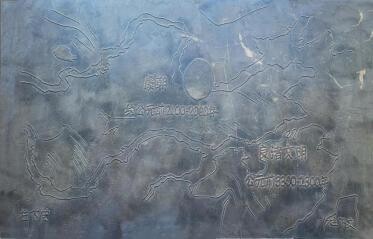
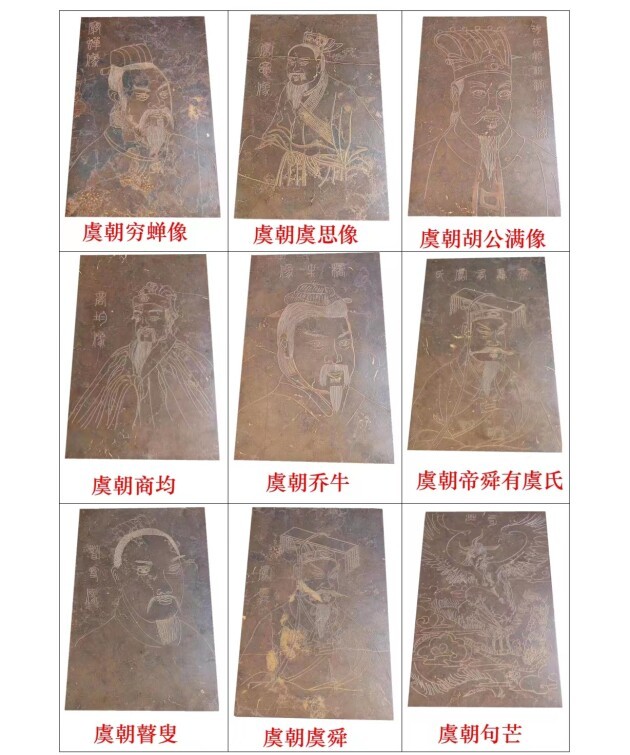
古唐朝 陶唐王朝 唐朝
唐国 ,又称”古唐国“、”陶唐古国“ ,为中国上古时期帝尧陶唐氏伊祁放勋担任诸侯 王(当时称“唐侯” ) 时的封地;是黄帝时期(前 2697—前 2168 年) 的一个城邦国家 。 位于今河北保定唐县 ,后迁徙山西太原一带 。于帝挚4 年(前 2173 年)敕封而建立。
帝尧为帝喾第四子 ,母为伊祁氏之女 。帝尧从小在外祖父家长大 ,成年后便随了外祖父的姓氏 ,称”伊祁放勋“ 。 当帝尧年满十岁以后 ,才回到父亲身边。
前 2168 年(帝挚 9 年) ,继承帝喾皇位的青阳二世(即帝挚 ,帝尧异母兄 ,帝喾庶长子 。为区分青阳一世白帝少昊姬玄嚣而改称为”青阳二世“ ) 因执政不善而降旨禅位于他。于是伊祁放勋便在今太原定都 ,改国号为”唐“ ,改当年为帝尧元年 ,建立了古唐朝 。与此同时 ,黄帝王朝也宣告终结。
中文名:唐国
外文名:Tang State
别名 :古唐国、 陶唐古国
国都 :河北唐县、 山西太原
姓氏 :伊祁氏
领导者 :唐侯伊祁放勋
建立时间 :前 2173 年(帝挚 4 年)
所处文化层 :河北-山西龙山文化时期
相关文化遗址: 山西陶寺文化遗址
国脉继承 :古唐朝(陶唐王朝)
纪年:帝挚 4 年—帝挚 9 年(帝尧元年)
结束时间:前 2168 年(帝挚 9 年、帝尧元年)
所属民族 :夏族 , 阪泉之战后改称“华夏族”
实质 :城邦国家
年限推断依据:三皇五帝年表
所处朝代:黄帝时期(前 2697—前 2168 年)
相关墓葬: 山东鄄城谷林尧陵
Ancient Tang Dynasty, Tao Tang Dynasty, Tang Dynasty
Tang State, also known as "Ancient Tang State", "Tao Tang Ancient country", was the fiefdom of Emperor Yao Tao Tang Yi Qi Fangxun when he was a vassal king (then called "Tang Hou") in ancient China. It was a city-state during the period of the Yellow Emperor (2697-2168 BC). It is located in Tang County, Baoding, Hebei Province, and later moved to Taiyuan, Shanxi Province. It was established in the 4th year of Emperor Zhi (2173 BC).
Emperor Yao was the fourth son of Emperor 喾, his mother was the daughter of the Eqi clan. Emperor Yao grew up in his grandfather's parents, and when he became an adult, he took his grandfather's surname and called himself "Yiqi Fangxun". When Emperor Yao reached the age of ten, he returned to his father.
In 2168 BC (9th year of Emperor Zhi), Emperor Qingyang II (Emperor Zhi, half-brother of
Emperor Yao, eldest son of Emperor 喾) succeeded Emperor 喾. In order to distinguish the
White emperor Shaohaoji Xuanxiao from Qing Yang I, he changed his name to "Qing Yang II") and ordered Zen to be placed on him because of his poor governance. So Yiqi Fangxun set up the capital in today's Taiyuan, changed the title to "Tang", changed the year to the first year of Emperor Yao, established the ancient Tang Dynasty. At the same time, the Yellow Emperor
Dynasty also came to an end.
Chinese name: Tang State Foreign name: Tang State alias: Ancient Tang State, Tao Tang ancient country
Capital: Tang County, Hebei, Taiyuan, Shanxi Surname: Yi Qi Leader: Tang Hou Yi Qi Fangxun Established time: 2173 BC (Emperor Zhi 4 years) in the cultural layer: Hebei - Shanxi
Longshan culture period
Related cultural sites: Shanxi Tao Temple Cultural Heritage: Ancient Tang Dynasty (Tao Tang Dynasty)
Period: Emperor Zhi 4 - Emperor Zhi 9 years (the first year of Emperor Yao) End time: 2168 BC (Emperor Zhi 9 years, the first year of Emperor Yao)
Nationality: Xia nationality, after the Hanquan War renamed "Huaxia nationality" essence: city-state
Age inference basis: Chronology of Three emperors and five emperors Dynasty: Yellow Emperor Period (2697-2168 BC)
Related tombs: Shandong Juancheng Valley Lin Yao Mausoleum
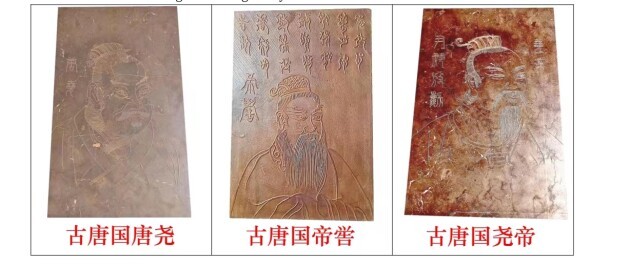
华胥国
中国上古时代城邦国家
华胥国,又称华胥古国。华胥古国是中国传说时代的氏族部落,距今约 8000— 5000 年。相传隧人氏时代 ,有一位妙龄少女名华胥 ,居住在弱山南麓的蓝田县境内 。一 日 ,发现一行巨 形脚印,踏之 ,便有了身孕 ,在成纪生下伏羲、女娲 。后《列子· 黄帝》记载黄帝梦游于华胥国,描绘了世外桃源般的无奸无恶、无忧无虑的的理想之国。其本身描绘的为黄帝的梦境,但华胥国及其传说有遗迹可寻。
中文名 :华胥国
外文名 :huaxuguguo
别名 :华胥古国
出处:《列子· 黄帝》
领导人 :华胥氏
Hua Xu Guo
Chinese ancient city-state
Huxu country, also known as Huxu ancient country. Huaxu Ancient country is a legendary clan tribe in China, dating back to about 8000-5000 years ago. According to legend, there was a young girl named Hua Xu who lived in Lantian County at the southern foot of the weak mountain. One day, I found a huge set of footprints, and when I stepped on them, I was pregnant and gave birth to Fuxi and Nuwa in Chengji. The later book "Yellow Emperor" recorded that the Yellow Emperor sleepwalked in the Huxu Kingdom, depicting the ideal
land of paradise without any evil and carefree. It itself depicts a dream of the Yellow
Emperor, but traces of the Huxu Kingdom and its legends can be found.
Chinese name: Huxu country Foreign name: huaxuguguo Alias: Huxu ancient country
Source: "Lizi · Yellow Emperor" Leader: Xu Family
——来自于网络
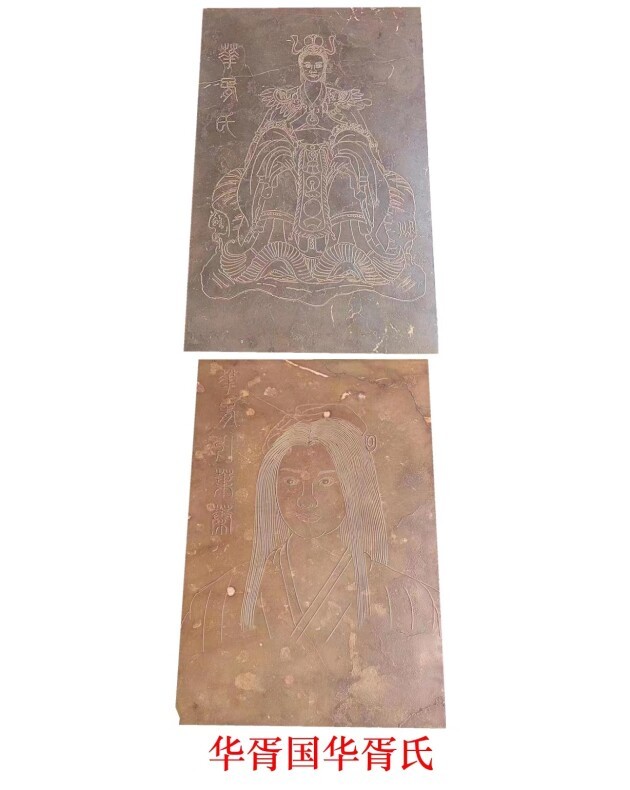
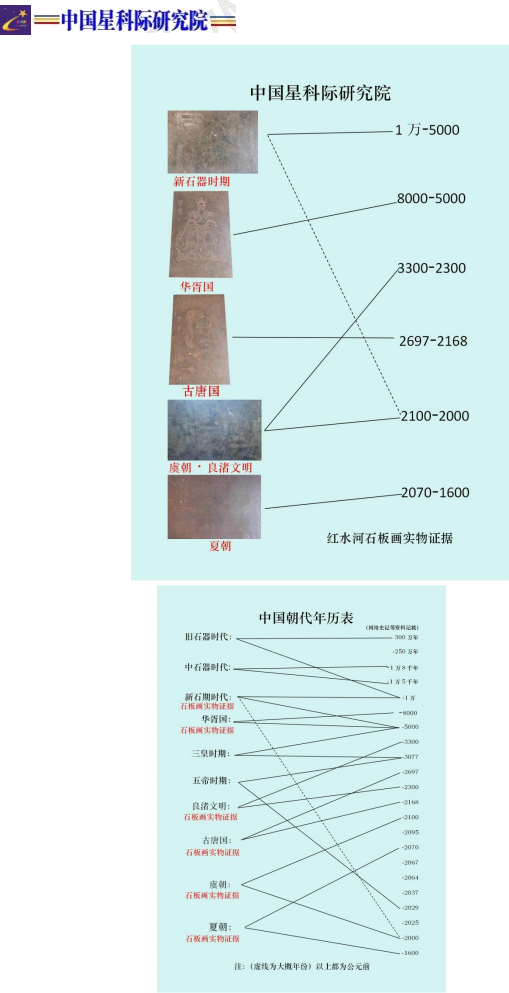
中国商朝前的四个朝代实物证据
一、红水河石板画打捞现场及过程真实可靠。
二、 中国星科际研究院根据国家标准化委员会认证的, 中国星科际研究院(外星人物品、宇 宙硅基生命实物鉴定标准 Q/141000SXXKJDHS2017-2020. )对实物物理鉴定结果:制作工艺是在高温无氧的环境下制作得 ,与地球人类制作无关。
三 、 中 国 星 科 际 研 究 院 根 据 (外 星 人 物 品 、 宇 宙 硅 基 生 命 实 物 鉴 定 标 准 Q/141000SXXKJDHS2017-2020. )对石板画内容真假的鉴定 。根据反推理逻辑得出以下结论: 石板画的内容没有虚假的,是真实存在的, 由此可见石板画是证明中国历史(乃自世界历史)朝代演变的实物证据。
四、红水河石板画经过中科院碳 14 年份检测 ,为 11829 年前的物品。
五、经过北京天鉴量子检测为公元前 2 万 5 千年前的物品。
根据以上五项证据 :可以证明中国商朝前夏朝、虞朝、 古唐国、 华胥国是真实存在无疑的。
中国星科际研究院
2023 年 12 月 6 日
Physical evidence of four dynasties before the Shang Dynasty in China
First, the Hongshui River SLATE painting salvage site and process are real and reliable.
According to the certification of the National Standardization Committee, the China International Academy of Satellite Science (alien objects, cosmic
silicon-based life physical identification standard Q/141000SXXKJDHS2017-2020.) Physical identification results of the physical identification: the
production process is made in a high-temperature environment without oxygen, and has nothing to do with the production of human beings on Earth. Third, the China International Academy of Astrology according to (alien objects, space silicon-based life physical identification standard
Q/141000SXXKJDHS2017-2020.) the identification of the content of the SLATE painting is true or false. According to the counter-reasoning logic, the following conclusion is drawn: the content of SLATE painting is not false, but real, so it can be seen that SLATE painting is the physical evidence that proves the evolution of Chinese history (but from the world history).
The Hongshui River SLATE painting has passed the carbon 14 year test of the Chinese Academy of Sciences and is an item before 11829. Five, after the Beijing Tianjian quantum test for 25000 years ago.
According to the above five evidences, it can be proved that the Xia Dynasty, Yu Dynasty, ancient Tang State and Huxu State before the Shang Dynasty in China are real.
China International Academy of Astrology
December 6, 2023
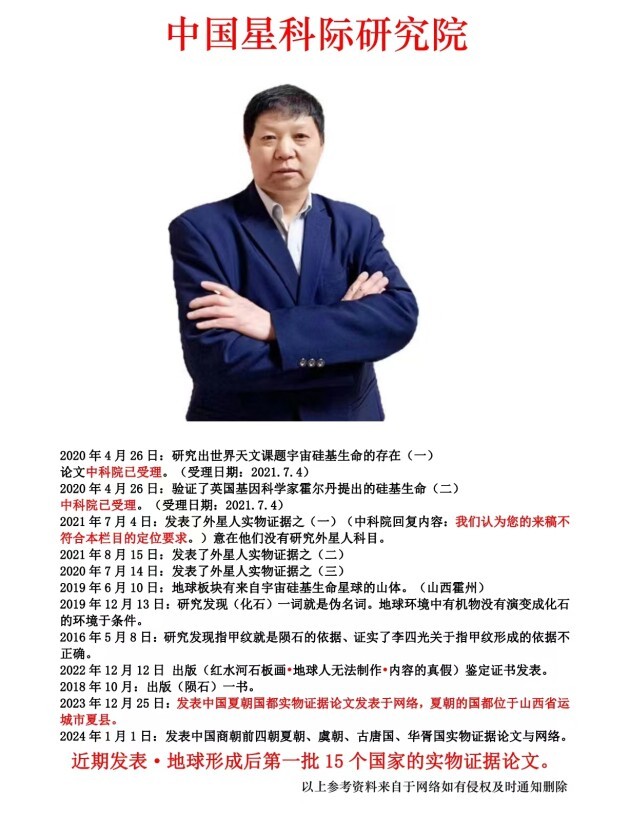
(作者王三虎)
郑重声明:图文由自媒体作者发布,我们尊重原作版权,但因数量庞大无法逐一核实,图片与文字所有方如有疑问可与我们联系,核实后我们将予以删除。
热门阅读
最近发表
商业百姓之家,版权所有